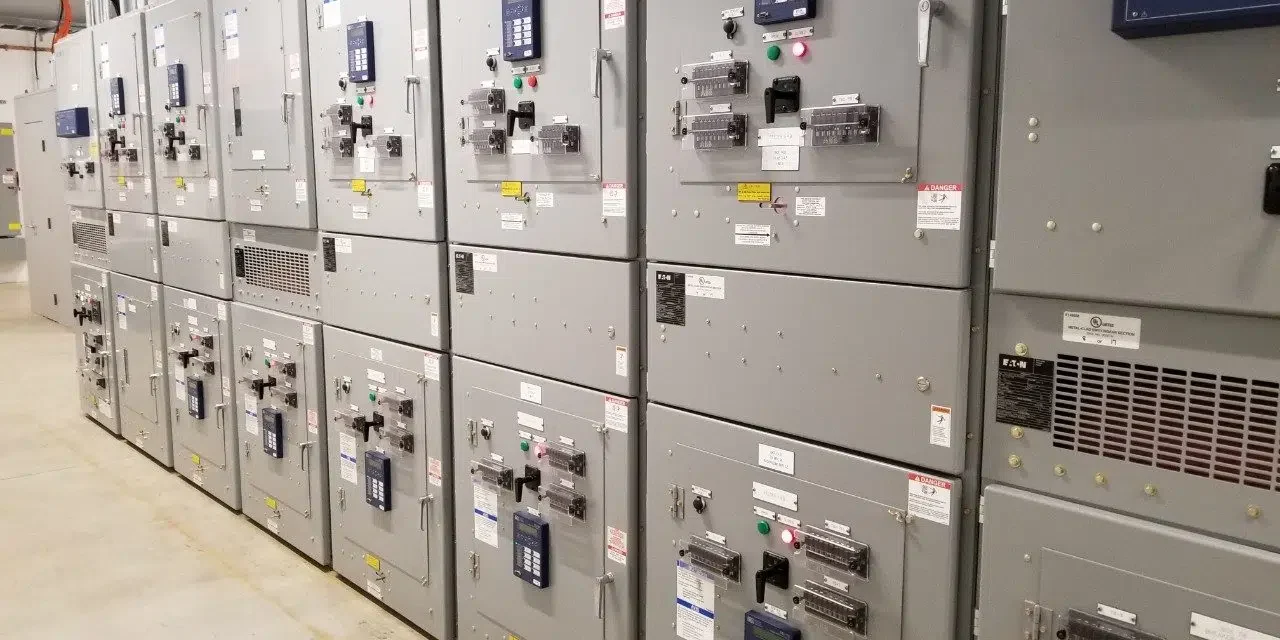The selection of materials plays a critical role in the performance, reliability, and lifespan of switchgear. Different components require materials that provide high conductivity, mechanical strength, insulation, and resistance to environmental factors. Below is an analysis of how material choice influences switchgear:
1. Conducting Materials (Busbars & Contacts)
- Copper and aluminum are commonly used due to their excellent electrical conductivity.
- Copper is preferred for high-performance switchgear due to its superior conductivity and resistance to oxidation.
- Aluminum is lighter and more cost-effective but has lower conductivity and requires additional surface treatment to prevent corrosion.
- Silver plating is often applied to contact points to reduce resistance and enhance durability.
2. Insulating Materials
- Epoxy Resin provides high dielectric strength and is used for insulators and bushings.
- Porcelain is used in high-voltage applications due to its excellent thermal and mechanical properties.
- SF₆ Gas is used in gas-insulated switchgear (GIS) to provide superior insulation and arc quenching.
- Thermoplastic Materials like polycarbonate and fiberglass-reinforced plastics offer lightweight, flame-retardant properties for low-voltage applications.
3. Enclosure and Structural Materials
- Mild Steel is commonly used for switchgear enclosures, providing strength and durability while being cost-effective.
- Stainless Steel is used in corrosive environments, such as coastal areas or chemical plants, to prevent rust.
- Aluminum is lightweight and offers moderate corrosion resistance, often used in compact and portable switchgear.
- Powder Coating or Galvanization is applied to steel enclosures to prevent rusting and enhance longevity.
4. Arc Quenching Materials
- Vacuum is used in vacuum circuit breakers (VCBs) for effective arc quenching with minimal maintenance.
- SF₆ Gas is widely used in medium- and high-voltage circuit breakers due to its high dielectric strength and ability to extinguish arcs efficiently.
- Air and Oil are used in traditional air-insulated (AIS) and oil circuit breakers, though oil is now less common due to environmental concerns.
5. Sealing and Gasket Materials
- Silicone Rubber provides flexibility and resistance to temperature variations, often used for sealing switchgear compartments.
- Neoprene and Nitrile Rubber are used for gasket materials in enclosures to prevent moisture and dust ingress.
- PTFE (Teflon) is used in high-performance applications due to its excellent chemical resistance and thermal stability.
6. Fasteners and Mechanical Components
- Stainless Steel Bolts and Screws prevent corrosion and ensure structural integrity in outdoor switchgear.
- Brass and Copper-Alloy Springs maintain consistent contact pressure in electrical connections, improving reliability.
- Composite Materials such as fiber-reinforced plastics are used in lightweight, high-strength insulating parts.
Conclusion
The selection of materials directly influences electrical efficiency, mechanical robustness, thermal stability, corrosion resistance, and insulation quality in switchgear. Choosing high-quality materials enhances safety, longevity, and operational reliability, while poor material choices can lead to failures, increased maintenance, and safety hazards.
Hashtags
#SwitchgearMaterials #ElectricalDurability #MaterialSelection #SwitchgearPerformance #PowerReliability #CopperBusbars #InsulationTechnology #ElectricalSafety #CorrosionResistance #IndustrialMaterials #EnergyEfficiency #SustainableSwitchgear #HighVoltage #SmartSwitchgear #MetalEnclosures #ThermalManagement #DielectricStrength #ConductivityMatters #PowerGridResilience #ElectricalEngineering #PowerDistribution #RenewableEnergy #SmartGrid #EnergyStorage #ElectricalInfrastructure














